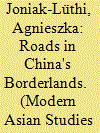| Srl | Item |
| 1 |
ID:
159205


|
|
|
|
|
| Summary/Abstract |
This article uses the ongoing policy debate over “harm reduction” as a lens for examining the complex relationships between global health governance and the global governance of other issue areas—in this case, the global narcotics control regime. Examining the dynamics of policy entrepreneurship at this interface, I argue that both material and ideational power matter, and that there is a need to better understand the potential influence that global health institutions have in other policy spheres and the extent to which framing can be a successful advocacy strategy. Without denying the potential for policy entrepreneurship, I argue that this case offers some insights into how power and influence operate at such interfaces, which can be important in better understanding the potential for global health institutions to successfully promote pro-health policies.
|
|
|
|
|
|
|
|
|
|
|
|
|
|
|
|
| 2 |
ID:
144217


|
|
|
|
|
| Summary/Abstract |
Since the beginning of the twenty-first century, the tarmac road network in Xinjiang Uyghur Autonomous Region in northwest China has been greatly expanded. The total length of roads increased from about 30,000 kilometres in 1999 to more than 146,000 kilometres in 2008. Though roads are considered by the state to be instruments of economic development, in multi-ethnic border regions like Xinjiang, the role of an efficient road network in the construction of the Chinese state's imaginary ‘bounded space’ is arguably just as crucial. With the help of Lefebvre's (1991) and Soja's (1999) conceptualization of space, this article explores the multiple spatial figurations of which roads are a part in Xinjiang. The article starts from ‘the mappable’ dimension of the expanding road network, and moves on to discuss perceptions and representations related to this expansion, before finally discussing how individuals creatively explore its fissures and hidden pockets.
|
|
|
|
|
|
|
|
|
|
|
|
|
|
|
|